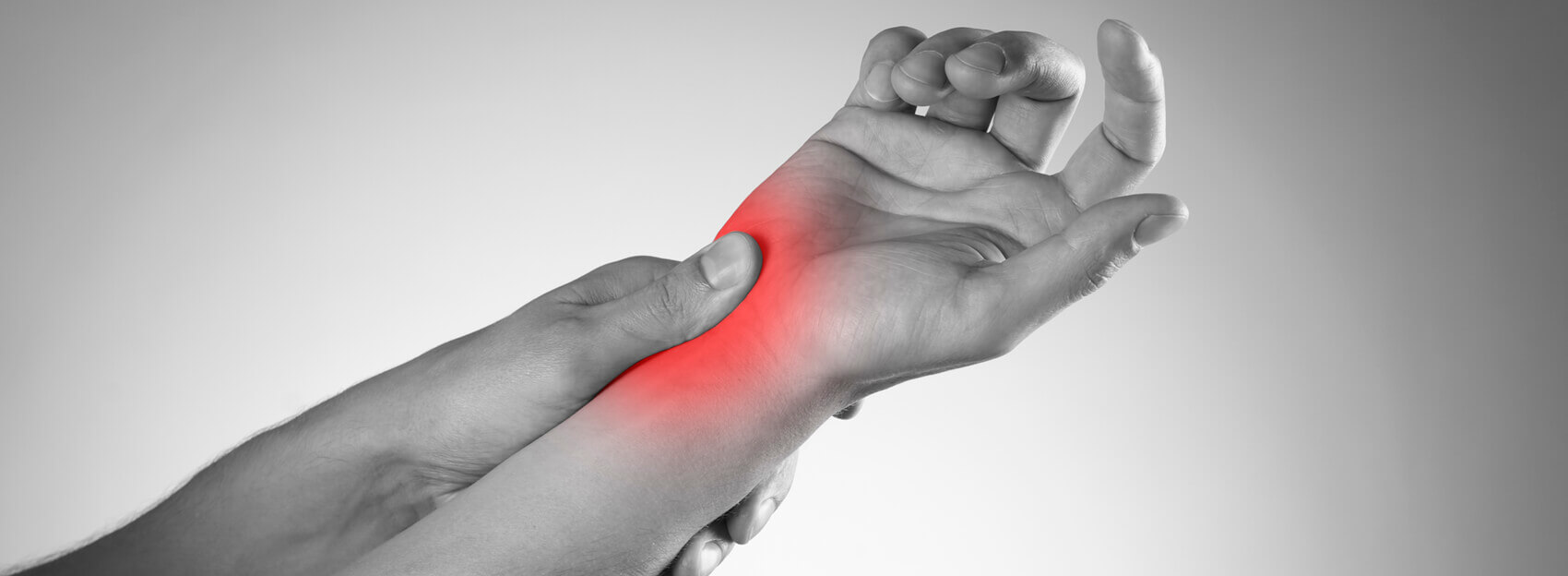In spite of its unfamiliar name, de Quervain’s tendinitis is an extremely common ailment, one frequently treated at Long Island Spine Rehabilitation Medicine. Also known as de Quervain’s tendinosis or tenosynovitis, the condition is an inflammation of the sheath that surrounds the two tendons that connect the wrist and the thumb. For reasons not yet clear, de Quervain’s tendinitis affects women 8 to 10 times more often than men; women are particularly prone to the disorder during the later stages of pregnancy and early in the postpartum period.
Causes of de Quervain’s Tendinitis
While no precise cause of this disorder has been pinpointed, it is associated with repetitive hand or wrist motions, especially those that move the thumb away from the wrist, turn the wrist, grip, grasp, clench, pinch or wring, such as:
- Gardening
- Cleaning
- Playing golf and other racket sports, skiing (all sports involving tight grasping)
- Lifting a baby
- Making a fist
Other reasons for restricted tendon mobility that may precipitate de Quervain’s tendonitis include:
- Direct injury to the thumb, wrist or tendon
- Overgrowth of scar tissue in the area
- Inflammatory conditions, like rheumatoid arthritis
What are tendons anyway?
Tendons are bands of tissue that attach muscle to bone. When you work the muscles of your hand as described above, the two tendons in your wrist are designed to glide smoothly through the small tunnel that connects them to the base of the thumb. Engaging in such actions for prolonged periods, however, may irritate the sheath surrounding these tendons, causing them to thicken and swell. This inflammation, in turn, restricts the ability of the tendons to move.
Risk Factors for de Quervain’s Tendinitis
As mentioned, being female and pregnant increases your risk of developing de Quervain’s tendinitis, as do the following:
- Being between the ages of 30 and 50
- Being a caretaker for a baby, repeatedly lifting the infant using your thumbs for leverage
- Working at a job, or engaging in a hobby, that involves repetitive hand and wrist motions
Symptoms of de Quervain’s Tendinitis
When patients come to one of our Long Island Spine offices with pain and swelling near the base of the thumb, difficulty moving the thumb and/or wrist, and a snapping or sticking sensation when they move their thumb, we suspect de Quervain’s tendonitis. Patients with this problem may also present with pain in their wrist or even up their forearm, pain that typically worsens when they grasp or twist.
If you are experiencing pain or an odd sensation in your thumb, wrist, or extending into your forearm, or are having trouble moving your thumb, making a fist, or grabbing something tightly, it’s time to contact the skilled diagnosticians at Long Island Spine Rehabilitation Medicine.
How de Quervain’s Tendinitis Is Diagnosed
Though we have cutting-edge diagnostic equipment at all of our offices, we probably won’t need it to diagnose this particular condition. Our well-trained, hands-on specialists will more than likely be able to confirm the problem with a thorough physical examination of the painful area. Feeling pain when pressure is applied to the thumb side of your wrist is relatively definitive. We will also perform a Finkelstein test to be certain.
A Finkelstein test is one in which you bend your thumb across the palm of your hand and bend your fingers down over your thumb. Then you bend your wrist toward your little finger. If this motion causes you pain on the thumb side of your wrist, the diagnosis is de Quervain’s.
How de Quervain’s Tendinitis Is Treated
In treating de Quervain’s tendonitis, we primarily focus on three objectives:
- Reducing inflammation
- Preserving movement in the thumb
- Preventing recurrence
With early intervention, we should be able to provide you with major improvement in 4 to 6 weeks. If you are pregnant, your symptoms will probably end either when you give birth or when you finish breastfeeding.
Other measures our doctors may take to make you more comfortable, beyond the usual recommendations of ice pack applications and over-the-counter anti-inflammatories like Advil, Motrin, or Aleve are:
- Administering corticosteroid injections utilizing ultrasound guidance to reduce pain and swelling
- Immobilizing your thumb and wrist with a splint or brace
- Involving you in customized physical and occupational therapy to strengthen your wrist muscles, reduce pain and limit irritation
- Advising activity modifications to avoid repetitive thumb movements as much as possible
- Considering platelet rich plasma (PRP) injections to accelerate healing
- Administering acupuncture treatments
The important thing to remember with most musculoskeletal problems is that consulting with talented professionals at the first sign of trouble is the best course of action. Delaying diagnosis and appropriate treatment usually allows the problem to worsen and may result in further damage. In the case of de Quervain’s tendonitis, ignoring symptoms may limit the range of motion of your wrist permanently and/or result in a need for surgery.
Reach Out to Long Island Spine Rehabilitation Medicine at the First Sign of Trouble
At Long Island Spine, we are committed to conservative treatment, always viewing surgery as a last resort. Therefore, there is no reason to fear that contacting one of our convenient offices throughout Nassau, Suffolk, and Queens Counties is an over-reaction to your pain or immobility issues. You can rely on us to make lessening your pain in the most non-invasive way possible our top priority.
